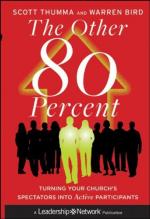[Footnote 1: This letter was by John Henley, commonly called Orator Henley. The paper is without signature in first issue or reprint, but the few introductory lines, doubtless, are by Steele. John Henley was at this time but 20 years old. He was born at Melton Mowbray in 1692, and entered St. John’s College, Cambridge, in 1709. After obtaining his degree he was invited to take charge of the Grammar School in his native place, and raised it from decay. He published Esther, a poem; went to London; introduced action into pulpit oratory; missing preferment, gave lectures and orations, religious on Sundays, and political on Wednesdays; was described by Pope in the Dunciad as the Zany of his age, and represented by Hogarth upon a scaffold with a monkey by his side saying Amen. He edited a paper of nonsense called the Hip Doctor, and once attracted to his oratory an audience of shoemakers by announcing that he would teach a new and short way of making shoes; his way being to cut off the tops of boots. He died in 1756.]
[Footnote 2: Percy suggests very doubtfully that this may mean Thomas Woolston, who was bom in 1669, educated at Sidney College, Cambridge, published, in 1705, The Old Apology for the Truth against the Jews and Gentiles revived, and afterwards was imprisoned and fined for levity in discussing sacred subjects. The text points to a medical theory of intermarriage. There was a Thomas Winston, of Clare Hall, Cambridge, who travelled over the continent, took degrees at Basle and Padua, returned to take his M.D. at Cambridge, and settled in London in 1607.]
[Footnote 3: William Whiston, born 1667, educated at Tamworth School and Clare Hall, Cambridge, became a Fellow in 1693, and then Chaplain to Bishop Moore. In 1696 he published his New Theory of the Earth, which divided attention with Burnet’s Sacred Theory of the Earth already mentioned. In 1700 Whiston was invited to Cambridge, to act as deputy to Sir Isaac Newton, whom he succeeded in 1703 as Lucasian Professor. For holding some unorthodox opinions as to the doctrines of the early Christians, he was, in 1710, deprived of his Professorship, and banished from the University. He was a pious and learned man, who, although he was denied the Sacrament, did not suffer himself to be driven out of the Church of England till 1747. At last he established a small congregation in his own house in accordance with his own notion of primitive Christianity. He lived till 1752.]




